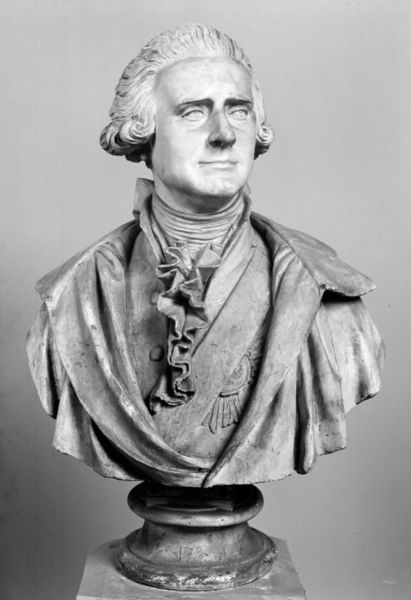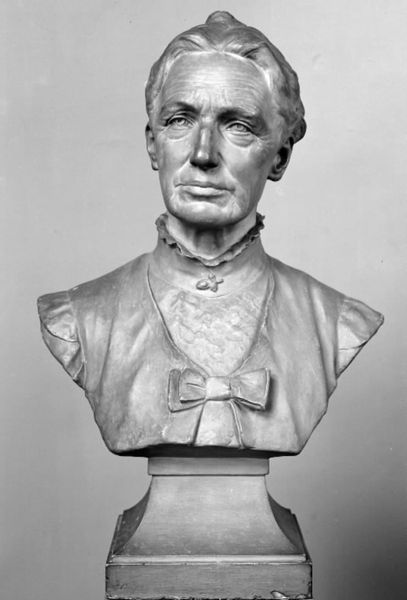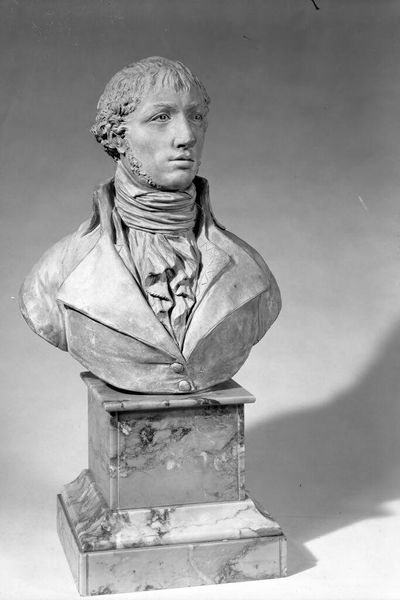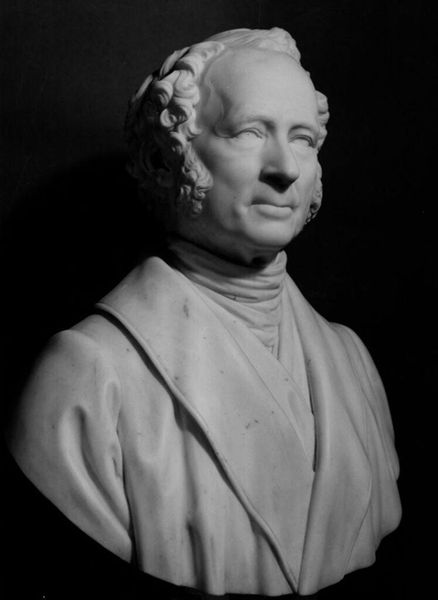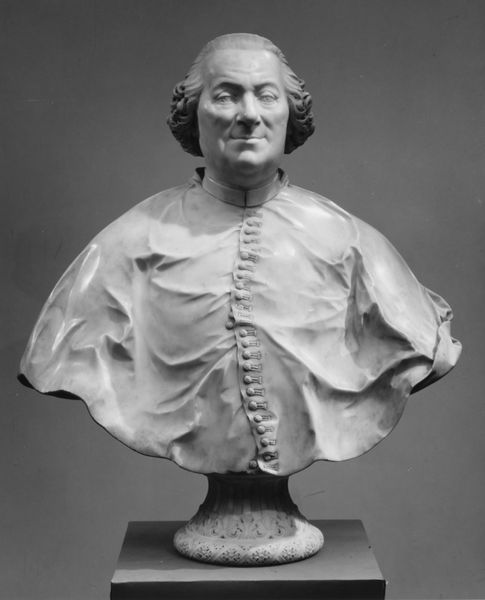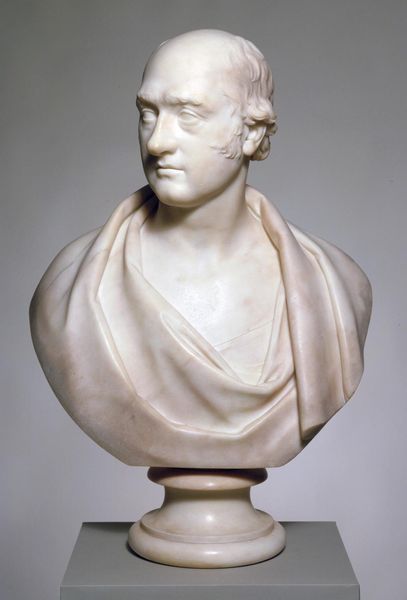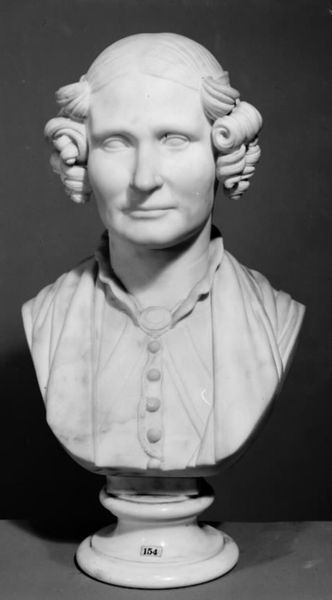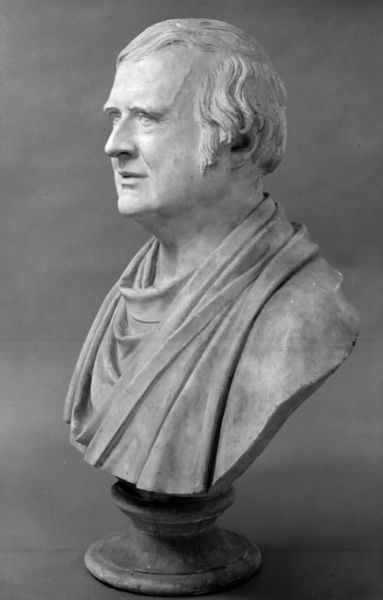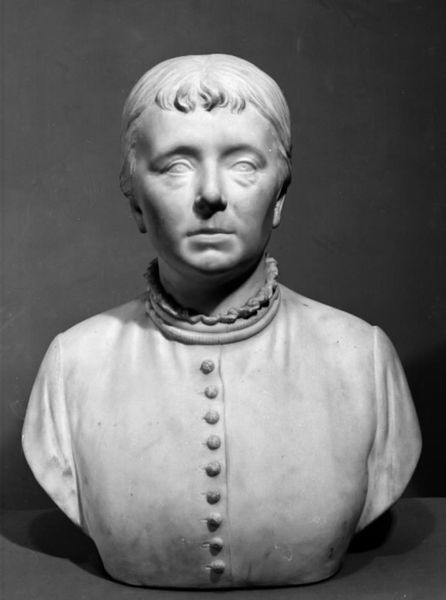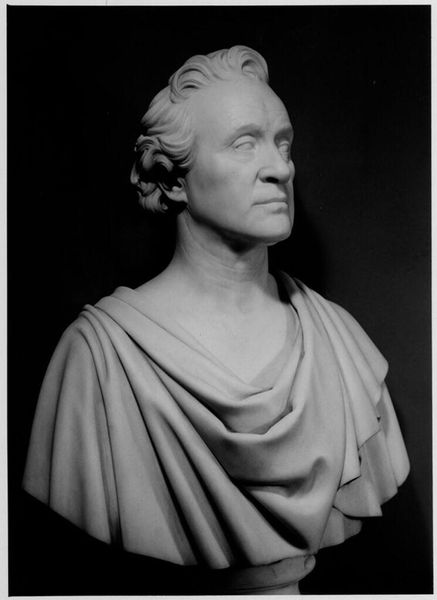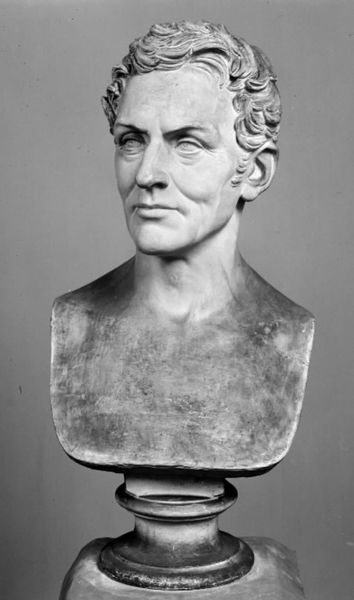
Portrait Bust of Major-General Johan Frederik Classen 1793
0:00
0:00
carving, sculpture, marble
#
neoclacissism
#
carving
#
sculpture
#
classical-realism
#
sculpture
#
marble
Dimensions: 85.5 cm (height) (Netto)
Curator: Take a moment to gaze upon this marble sculpture. It’s a portrait bust created in 1793 by Johannes Wiedewelt. The subject is Major-General Johan Frederik Classen. Editor: He looks…determined, or perhaps stubbornly confident? There’s a stiffness in his posture, an unwillingness to yield in his expression. It's interesting to me how sculptors in that era portrayed men of power. Curator: Absolutely, and much of that comes from the symbolic language of Neoclassicism. Notice how Wiedewelt uses classical realism, striving for idealised representation to convey authority and stature. Even his garments carry significance. The draped fabric mimics a Roman toga, alluding to republican virtue and military leadership, though its style has been brought to life with the contemporary detailing in the cravat and trim of his suit. It almost makes the statement that nobility is a classic ideal modernized for that time. Editor: You can tell the neoclassical style was definitely an inspiration at the time, it's interesting how even back then artists borrowed, iterated on concepts from previous cultures to amplify what they want to express with their art. What do you make of the face? Curator: The face, with its resolute gaze and slightly pursed lips, speaks of control. Wiedewelt doesn't shy away from portraying Classen's prominent features but presents them with a sort of noble restraint. And of course the choice of marble as a medium only serves to enhance that timeless quality that they sought to give these subjects of power back then. It adds to the illusion of permanence and grandeur. What do you think it communicates to the audience, and why did people get statues like this in their time? Editor: In times of huge, monumental change, I wonder if people find a sense of solace in images that suggest control, certainty, and a direct link to historical grandeur, or if it was to memorialize this historical figure so people would think of them in a powerful and admirable light? Power through image and memory, and power held with certain stoicism is what the artwork seems to communicate to me the most. Curator: Yes, it really is a powerful example of the ways in which art embodies its own historical period while subtly guiding the way we think and feel. Editor: It's like holding a fragment of the past, still resonating today with these old statements of purpose, ambition, and memory.
Comments
No comments
Be the first to comment and join the conversation on the ultimate creative platform.
